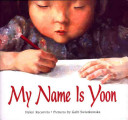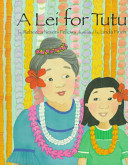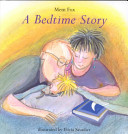Suspended from school for cussing at a mean teacher, John “Spud”’ Sweetgrass at least still has his job selling french fries from a curbside “chip wagon.” But he notices that something stinks — literally. It’s the smell of rancid cooking oil at a polluted Ottawa beach. His suspicions aroused, Spud follows Dumper Stubbs, a creepy delivery man who services local restaurants and chip wagons. Spud gets angry when he sees Dumper living up to his name, dumping oil into a storm drain and causing terrible pollution in the river. When Spud blows the whistle, he loses his job. Enlisting the help of his buddy Dink the Thinker, and Connie Pan — whom he calls his girlfriend though she isn’t exactly that — Spud thinks he has a chance of regaining his job and stopping the Dumper’s harmful activities. In the background of this offbeat farce are serious issues that Spud must also deal with, including his father’s death, his mother’s withdrawal into grief, and his own awkward transition through adolescence. Brian Doyle expertly interweaves comedy and important contemporary concerns of young people in this vivid story with a message.
Realistic Fiction
Realistic Fiction genre
A Path of Stars
A refugee from Cambodia, Dara’s beloved grandmother, Lok Yeay, is grief-stricken when she learns her brother–left behind in Cambodia–has died, and it is up to Dara to bring Lok Yeay back to a place of happiness.
This book has been included in WOW’s Kids Taking Action Booklist. For our current list, visit our Boolist page under Resources in the green navigation bar.
The Mummer’s Song
Don’t seem like Christmas if the mummers are not here, Granny would say as she knit in her chair. But on a cold, clear Newfoundland night shortly after Christmas, several outlandishly costumed mummers do appear and Granny’s house suddenly erupts in a burst of joking and tomfollery, raucous singing and exuberant dancing. Granny and her two young charges are instantly caught up in the merriment, When the evening’s festivities come to a close, the mummers are bid a fond farewell until next year.
Popular singer Bud Davidage wrote “The Mummer’s Song” as a tribute to a centuries-old custom in danger of disappearing. Since its publication in 1973, it has fostered a revival of mummering, as noted author and Newfoundland son Kevin Major points out in his afterword. The sparkling illustrations in this picture book adaptation are by the well-known Canadian artist Ian Wallace.
My Name Is Yoon

Disliking her name as written in English, Korean-born Yoon, or “shining wisdom,” refers to herself as “cat,” “bird,” and “cupcake,” as a way to feel more comfortable in her new school and new country. (Ezra Jack Keats New Illustrator Award, 2004)
Get Out of Bed!
Amy’s mother, father, brother, and the school principal use very unusual measures to try to get the sleepy girl out of bed.
A Lei for Tutu

Nahoa loves making leis with her grandmother and looks forward to helping her create a special one for Lei Day, until her grandmother becomes very ill.
The Slumber Party

Jane’s birthday sleepover is a night of games, a lost mouse, a croaking frog, a little sleep, and a lot of fun.
Wilfrid Gordon Mcdonald Partridge

Wilfrid Gordon McDonald Partridge, a rather small boy, lives next door to a nursing home in which resides Miss Nancy Alison Delacourt Cooper, his favorite friend, because she has four names as well. When Miss Nancy “loses” her memory, the intrepid Wilfrid sets out to find it for her.
All The Better To See You With!

Because Kate is the quiet one compared to her four noisy brothers and sisters, her parents are slow to notice that she is near-sighted and needs glasses.
A Bedtime Story

Polly and her friend Bed Rabbit have lots of books, but they don’t know how to read, so Polly’s parents interrupt their own reading for a bedtime story.
